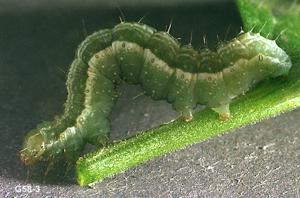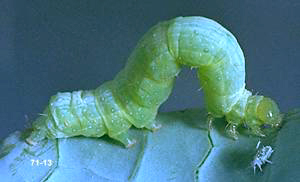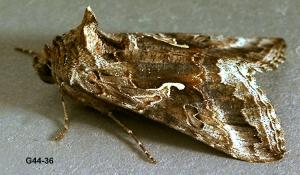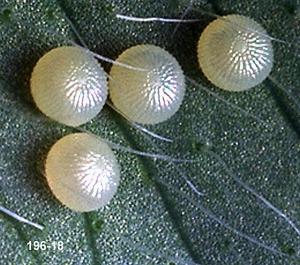|
LOOPER LIFE CYCLE AND BIOLOGY |
|||||||||
CONTENTS |
Two species of loopers feed on mint leaves. Alfalfa looper, Autographa californica, and cabbage looper, Trichoplusia ni, vary in color from light to very dark green. Mature larvae range in size from 1 to 1 1/2 inches long and eat ragged- edged holes through the leaves or in from the leaf margins. Loopers are distinguished from cutworms and armyworms by their "looping" behavior when moving and by having only two pairs of abdominal prolegs (cutworms and armyworms have four pairs).
Both species commonly overwinter as pupae in cocoons in plant debris. Adults begin emerging in late March or April. Eggs are usually deposited singly on weed hosts, particularly wild mustards. They hatch in 3 to 5 days and the larvae feed for about 2 weeks before pupating in cocoons on the host plant or in plant debris. The total development time from egg to adult requires about 30 days. The second generation adults emerge shortly afterwards. There are three to four generations each year. Larvae of the second generation cause the most serious damage on mint, particularly during May, June, and early July. Larvae of the alfalfa looper and cabbage looper may occur at the same time as the variegated and spotted cutworms and the western yellowstriped and Bertha armyworms. See the looper developmental model to determine development in your area. |





